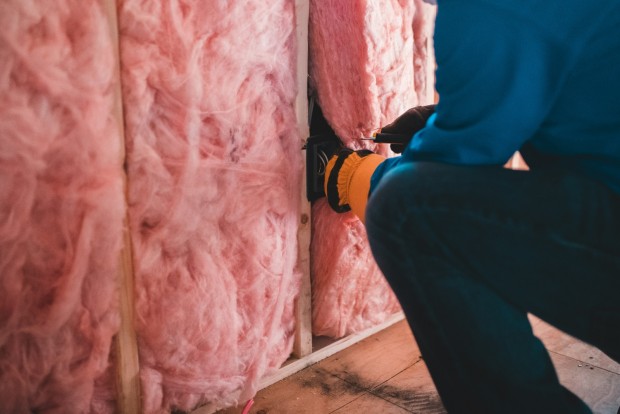Insulation in the house prevents heat flow, reducing the costs of heating and cooling in your home, which can also help you save money. Learn about these eight different forms of insulation that will completely change the comfort level in your house.

(Photo : Unsplash/Erik Mclean )
1. Fiberglass Insulation
Fiberglass is the most prevalent type of insulation found in homes, and it is made up of excellent glass fibers by composition. Rigid boards, batts or rolls, loose fill, and specialist duct insulation are the various forms that it is available in.
According to Bob Tschudi, a general contractor in Raleigh, North Carolina, who is also a member of the Angi Expert Review Board, fiberglass batts are the most environmentally friendly option for insulation. The R-value, which measures how effectively insulation prevents heat from escaping or entering your home, can be obtained by purchasing them at any large-scale retail establishment and inserting them between the joists or the wall structure.
2. Rigid Fiber Board Insulation
One of the most common applications for rigid fiber or fibrous board insulation is to insulate air ducts in residential buildings. This type of insulation is often made of either mineral wool or fiberglass. Moreover, it is utilized when there is a requirement for insulation that can tolerate extreme temperatures. These items are of different sizes, from 1 inch to 2.5 inches. Thus, insulation installation in air ducts is often carried out by HVAC contractors, who construct the insulation in their shops or job sites.
3. Foam Board or Rigid Foam
Almost any portion of your house, from the roof down to the foundation, can be insulated with foam boards, which are flexible insulation panels. Sheathing exterior walls, sheathing inner walls for basements, and sheathing them for specific applications like attic hatches are all areas where they perform exceptionally well. In addition to reducing heat transmission through structural elements such as wood and steel studs, they offer a high level of thermal resistance, up to two times higher than most other insulating materials of the same thickness size. Accordingly, foam board is often made from polystyrene, polyisocyanurate, polyiso, and polyurethane, the three most prevalent materials.
4. Spray Foam Insulation
Small spray containers or high-pressure spray foam applicators apply spray foam insulation. Polyisocyanurate or polyurethane creates a cementitious or phenolic material that adheres to surfaces and expands when applied.
Also Read: Building the Future: The Eco-Friendly Advantages of Modular Home
5. Recycled and Eco-Conscious Insulation
Using recycled and natural materials helps to lessen the negative impact that the construction industry has on the environment and how much waste it generates. There are many other forms that these insulation materials can be found in, such as batts, rolls, and loose-fill.
6. Blown-In Insulation
Installing blown-in insulation, also called loose-fill insulation, requires using a machine that sprays or blasts the insulation material into the insulated space. Typically composed of fiberglass, rock wool, or cellulose, the paper-like substance utilized in blown-in insulation is sufficiently flexible to fit in virtually any space, including tight crevices and corners.
7. Batt Insulation
The blanket that makes up batt insulation can be made of fiberglass, cellulose, mineral wool, natural fibers, or plastic, among other materials. It is possible to install these materials on unfinished walls, ceilings, and floors with relative ease, which makes this project suitable for do-it-yourselfers.
8. Insulating Concrete Forms (ICFs)
Insulating concrete forms, also known as ICFs, serve this purpose by shaping the concrete and providing insulation to maximize energy efficiency. A gap between two reinforced foam panels holds the concrete to cure while the foam stays in place throughout the lifespan of the concrete wall.
Related Article: 'Glass Brick' Offering Highest Insulating Performance Could Revolutionize Construction







